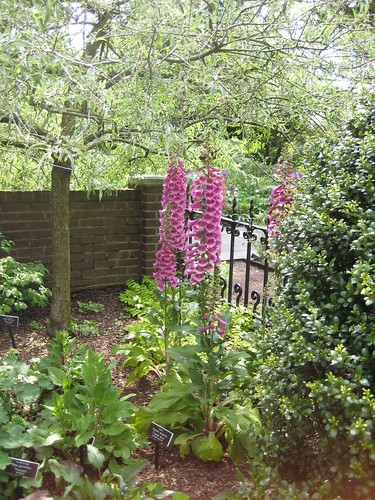In my magic-wand world, some of you regular readers (of which there are many, many -- *countless* -- droves of you) are reading this and thinking, Allium? Didn't she post on an Allium genus recently? (Hey, I can dream.) And in fact, I did post on this genus a few weeks back, showcasing the lovely Allium giganteum specimens in the New York Botanical Garden.

Allium schoenoprasum is clearly a smaller plant than the giant onion, actually A. schoenoprasum flowers are the smallest of this genus. And unusually, the species we see planted for ornamental purposes is no different than the one you grow with culinary goals in mind.
In addition to being a lovely ornamental flower, and a tasty herb for cooking (chives belong to the select group of plants that the French categorize as 'fines herbes'), chives dry beautifully and have some ability to repel unwanted insects in a garden.

While the word chive itself is derivative of the Latin word for onion, cepa, schoenoprasum has Greek origins. Schoinos means 'rush' (the plant, not the verb) in Greek and refers to the chives' grassy habit -- it looks like a rush. Prasum means 'leek'. Thus the species name can be translated as 'rush-like leek.'
As I mentioned in the previous Allium post, these plants share their genus with garlic (Allium sativum).



































